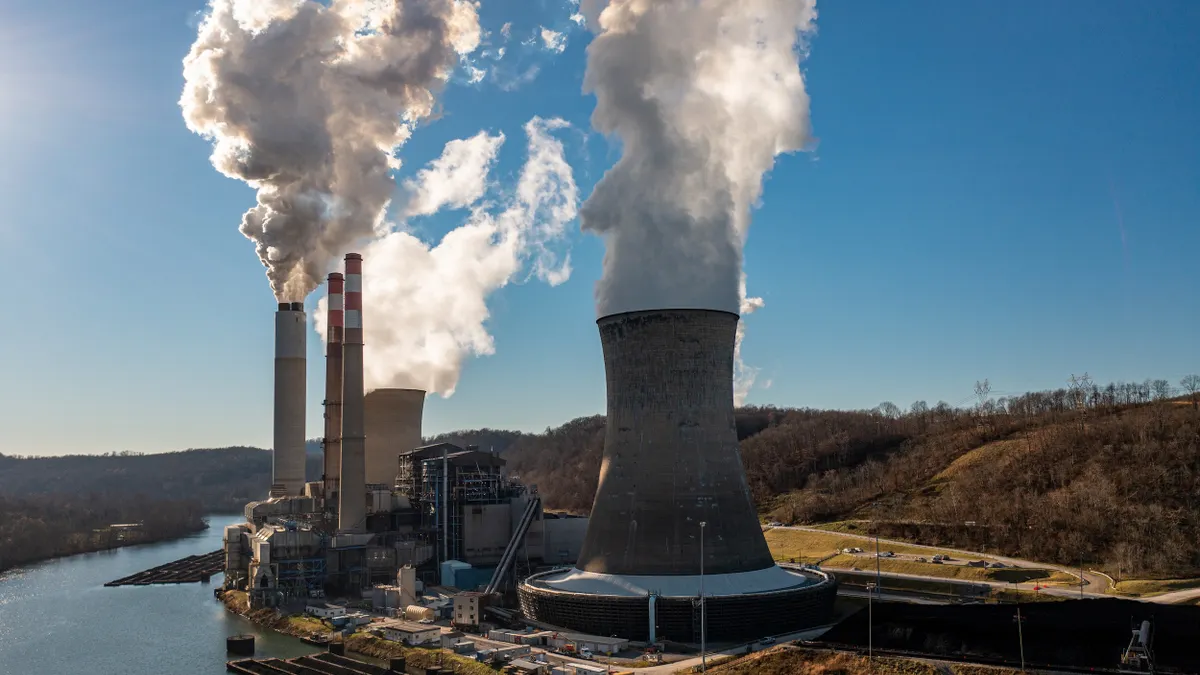Editor's Note: This piece was written by freelance science writer Megan Ray Nichols. The opinions represented in this piece are independent of Smart Cities Dive's views.
Countries worldwide continue to move away from fossil fuels and to more environmentally-friendly sources for powering vehicles, such as hydrogen fuel cells (HFCs).
NASA’s Gemini 5 first used hydrogen as an energy source more than 50 years ago. Hydrogen’s high production cost, however, made it a prohibitive option for use in the auto industry. New research by the University of Houston has uncovered a cheap and clean way to split water though, which opens hydrogen to becoming the new alternative to fossil fuels.
How hydrogen fuel is made
Hydrogen fuel is obtained three ways — natural gas reformation, charcoal gasification and water electrolysis.
Natural gas reformation is the most common form of hydrogen production as it produces 95% of the U.S.’s hydrogen. The process begins with steam-methane reforming, which produces hydrogen, carbon monoxide and carbon dioxide when natural gas and steam react under pressure and heat. A second reaction, between carbon monoxide and steam, creates additional hydrogen and carbon dioxide.
Charcoal gasification occurs by burning coal at high temperatures in a reactor. Because charcoal has a high carbon and water content, it splits water to produce hydrogen when heated. The process also creates carbon dioxide.
Water electrolysis creates hydrogen through electricity. An electric current is sent through water to split it into oxygen and hydrogen using an electrolyzer. These electrolyzers require high temperatures, from 70 degrees Celsius to more than 800 degrees Celsius and may use expensive metals, like platinum, to speed up the reaction.
The challenge of water electrolysis, as well as natural gas reformation and charcoal gasification, each requires a substantial catalyst, whether through intense pressure or high temperatures. The University of Houston’s method, however, splits water using ferrous metaphosphate.
Ferrous metaphosphate is more cost-effective, durable and longer-lasting than other catalysts because it can operate for 20 hours and 10,000 cycles. Most catalysts only last one to two hours. Because the university’s method uses water electrolysis, which can be powered by renewable energy, it’s also a cleaner process than charcoal gasification and natural gas reformation.
How hydrogen fuel powers cars
Honda and Toyota are the only two car manufacturers producing cars with HFCs. However, numerous car makers have begun to partner to promote hydrogen fuel and further develop it for automobiles.
Hydrogen fuel powers cars through stacks of HFCs, which feature an electrolyte membrane. The membrane separates a positive and negative terminal, called the anode and cathode. When a car is on, it’s powered by hydrogen through the following steps:
- Pressurized hydrogen moves to the anode or positive terminal
- Anode terminal splits hydrogen into ions and electrons
- Electrons go through an external circuit towards the cathode
- Electrons move and power the car’s engine
- Ions move to the cathode and are joined by electrons
- Electrons and ions combine with oxygen to create water and steam
Cars using hydrogen fuel feature a pressurized fuel tank. The tank is filled or refueled in the same way a gas vehicle is, though it can take around five minutes to refuel and can travel 312 miles on one tank of hydrogen. Most hydrogen gas stations are in California with more scheduled to be built in the state and throughout the Northeast.
How hydrogen fuel beats fossil fuels
Hydrogen exceeds fossil fuels as a fuel source for vehicles in several ways. Transportation is responsible for 27% of the U.S.’s greenhouse gas emissions, which is caused by vehicles powered by fossil fuels such as gasoline and diesel. Hydrogen cars don’t release any harmful emissions. They release only water.
Less fossil-fuel powered vehicles and more hydrogen-fueled transportation would have a substantial impact on greenhouse gas emissions. Cities would benefit the most, as they produce 70% of the world’s greenhouse gases and feature personal, as well as public transportation.
Movements to incorporate hydrogen into public transportation have already begun in China, which operates a hydrogen-powered tram that carries almost 400 passengers. If countries and their cities continue to adopt environmentally-friendly energy sources, like hydrogen fuel, they could lower their emissions.
Early adoption of hydrogen fuel would also allow cities to plan future expansions or renovations to their landscape with hydrogen fueling stations or structures for producing hydrogen fuel. This step would allow a city to begin lowering their greenhouse gas emission and preparing for when hydrogen fuel becomes a major feature of public and personal transportation.
Hydrogen also exceeds fossil fuels because it’s one of the most abundant elements, which contrasts with the fact that fossil fuels are a nonrenewable resource. While fossil fuels will eventually expire as a method for powering transportation, hydrogen offers longevity because it’s split from water.
Fossil fuels and hydrogen are interlinked, of course, as natural gas plays a significant role in producing hydrogen. The advancements by the University of Houston, as well as the U.S. Department of Energy’s $10 million-per-year investment into hydrogen splitting, suggest hydrogen will transition away from its dependence on fossil fuels as new, clean and cost-effective ways are discovered for producing hydrogen.
How hydrogen fuel must evolve
Hydrogen fuel poses as a competitor to fossil fuels. It’s capable of being produced through renewable energy and, when used in vehicles, provides zero harmful emissions and can travel a long distance before refueling.
Hydrogen must evolve to become more cost-effective and efficient in its production. Its production must be less reliant on fossil fuels to become a viable option for drivers. The investment of manufacturers and governments into researching hydrogen fuel indicate an interest in achieving these goals to bring an end to fossil fuels.

















